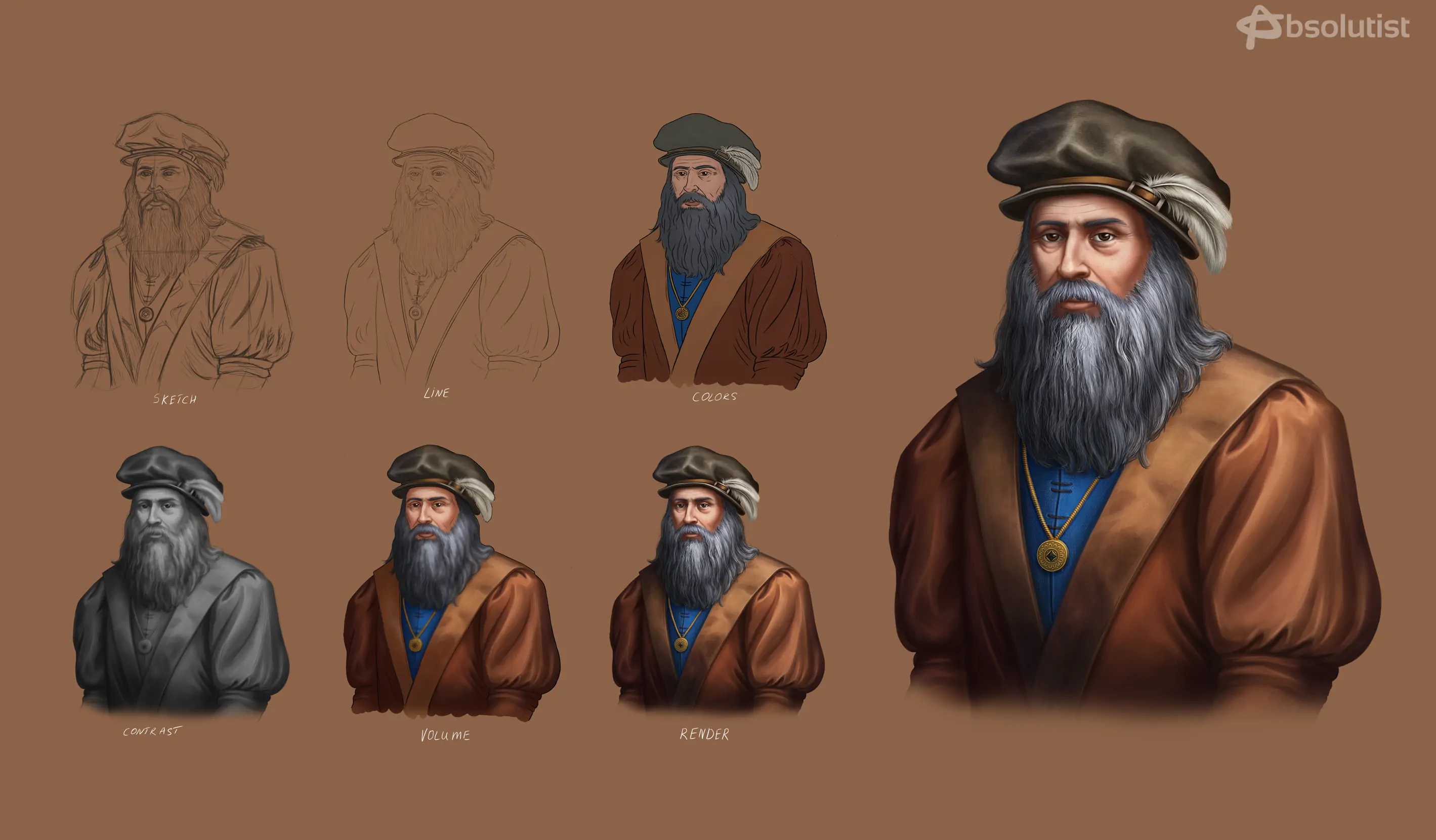An introduction to how game development pipelines work
August 7, 2023
The Absolutist team welcomes you!
This is the first article on our blog. We'd like to introduce our readers to how the industry is set up and how games are invented and created. To start with, we think we should bring you up to speed a little bit and tell you how games are created.
Game development pipelines refer to the structured and iterative processes involved in creating a video game, from conceptualization to final release. These pipelines typically consist of several stages encompassing different game development aspects, including design, art, programming, and testing. Let's explore the typical phases of a game development pipeline.
It goes without saying, the initial phase involves brainstorming and conceptualizing the game idea. Developers outline the core mechanics, gameplay features, story elements, target audience, and overall vision of the game. This stage often includes creating design documents, sketches, and prototypes to communicate the game concept effectively.

Once the concept is defined, the pre-production stage begins. This phase focuses on creating a detailed plan and establishing the game's scope, requirements, and technical specifications. The team may create concept art, storyboards, level designs, and initial prototypes. Additionally, the production pipeline, tools, and technology stack are established during this phase.
The production phase is the main development stage, where the majority of the game assets are created. The team develops the game's code, designs the levels, creates 3D models, textures, animations, and sound effects, and implements the game's mechanics. The production stage often involves the collaboration of various specialists, such as programmers, artists, level designers, writers, and sound engineers. As development progresses, a dedicated QA team conducts extensive testing to identify and resolve bugs, gameplay issues, and technical glitches. It’s undeniable that this stage helps ensure the game is stable, playable, and enjoyable. Testers provide feedback to the development team, and iterative improvements are made based on their findings. In the later stages of production, a select group of external users is invited to participate in beta testing. This phase helps gather valuable feedback on gameplay, performance, and overall player experience. Beta testers may report bugs, provide suggestions, and help balance game mechanics. Developers use this feedback to make final adjustments and improvements.

With the game nearing completion, the focus shifts to polishing the overall experience. This involves refining gameplay mechanics, enhancing graphics and audio, optimizing performance, and fine-tuning the game's balance. The team ensures that the game runs smoothly on various platforms and devices.
As a result, after extensive testing and polishing, the game is ready for release. The release phase involves final preparations, such as creating marketing materials, developing promotional strategies, and coordinating with publishers or distributors. The game is launched on appropriate platforms like consoles, PC, or mobile devices. Once the game is released, the development team continues to support it through updates, patches, and downloadable content (DLC). They address player feedback, fix any remaining issues, and may add new features or expansions to keep players engaged. Ongoing support and community management are crucial for maintaining a positive player experience and fostering a dedicated player base.
It's important to note that different game development teams and studios may have variations in their pipelines, depending on their specific needs, project scale, and development methodologies. However, the general phases outlined above provide a framework for understanding the typical game development pipeline.
Thank you for your attention! Stay tuned.



